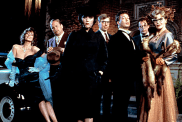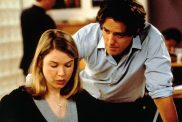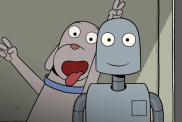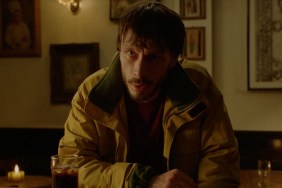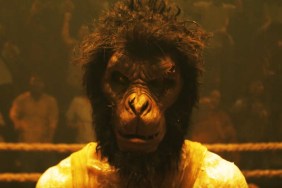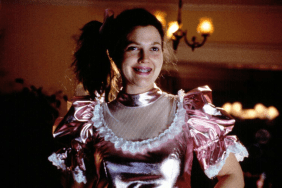
Pixar’s Inside Out enjoyed the largest opening weekend for an original property, animated, live-action or otherwise, this past weekend and before the film was ever released I had a chance to sit down with director and screenwriter Pete Docter and the film’s producer Jonas Rivera to largely discuss the ins and outs of turning this movie from a seedling of an idea Docter had back in 2009 to the feature film audiences are eating up in theaters right now.
How does a movie go from merely being a story about the emotions inside the head of an 11-year-old girl to being the complex, yet simply understood, logic machine Docter and his team of story writers, animators, artists and technical advisors conceived? What was the thinking behind the fluffy skin of the animated emotions? How did hand-drawn animation actually help the CG production? And I have a question about a pesky little plot hole that bothered me while watching that we get to at the very end, which is probably the only thing close to a spoiler you’re going to get from this interview.
I hope you enjoy…
It was eight years from Toy Story to Monsters, Inc., six years from Monsters, Inc. to Up and another six from Up to Inside Out. How does it start compared to where it ends?
Pete Docter (PD): Well it usually starts just with a concept. In this case it was an idea I had back in ’09. We pitched it, but didn’t really get to start on it until halfway through 2010.
Jonas Rivera (JR): Yeah, Up was just finished.
PD: So kind of from beginning to end it’s about five years of work. I was talking to Dan Scanlan who directed Monsters University and he said, “Yeah, we really are working in glazes.” Like, very thin, layers that get laid down over and over and over, and you build up plot and character and humor and all these things. We have a great story team, amazing writers that we get to work with and it’s up to me to steer and guide that whole process and use their amazing brains to find the film.

So what was the concept to start with?
PD: I think I pitched you, basically, what if we have an 11-year-old girl, but she’s not the protagonist, she’s the setting because inside her head are her emotions that help guide her through, even a day at school, and I think I had a little scene written about how she’s struggling to raise her hand to answer the question because Fear is like, “No, they’ll make fun of us.” That was all I had.
JR: Could we personify emotions and tell a story? Which I thought was such a cool idea, but even zooming out of that you were coming with this observation of your daughter, which I also thought was very cool. So you kind of married those two didn’t you?
What was the observation?
PD: She was eleven… I don’t know if you saw Up, but she was the voice of young Ellie at the beginning of that and she was kind of like that character, spinning around in circles and talking to people, just acting goofy. Then, when she turned 11, we’d start to hear from her teacher, “Well, Ellie’s a quiet child,” and we were like, “She is?! What’s going on?” You know? So that change in watching that come home — It’s all normal and nothing traumatic, but as a parent you sort of mourn the loss of sitting on the floor and playing with trains and stuff. That’s not going to happen anymore.
I actually thought it was interesting reading your interpretations of the film as being from the parents’ perspective. And I get what you’re saying, but at the same time, I have a really hard time looking at it that way, or at least processing it in those terms. Can you expand on that idea? Do you see yourselves in this film?
JR: I almost wonder if we see ourselves in the emotions.
PD: Right.
“Because, it’s not a movie for parents, but it’s a movie by parents and I think we hooked into it on a personal level.” ~ Jonas Rivera
JR: Because, it’s not a movie for parents, but it’s a movie by parents and I think we hooked into it on a personal level — at least I did when you pitched it — because my kid was young as he was pitching it and I got to thinking, Man, I’m going to be heading into that direction as well. So, personally, as we were making the film I remember thinking the characters, as we’re talking about them, are sort of representative of how I’m feeling about my kids. As a parent you try to do your best to steer your kids and guide them and kind of tell them what to do, but you can’t totally because they’re in control at some point and there’s a certain amount of letting go you have to do. With Joy, I think that’s exactly what Joy is doing. She’s literally driving, but realizing she doesn’t have all the power she once did and thought she did, and that just felt personal.
PD: Ronnie (co-director Ronaldo Del Carmen) had found this description of the job of emotions — “Emotions help guide and protect the organism as they go through life” — and we just thought if you just swap out the word “parent” instead of “emotion”, it’s the job of the parent to help guid and steer the kid through their life.
It’s interesting to hear you talk about the making of the movie in comparison to reading about it. I have a hard time figuring out how the story comes together.
PD: So do we. [laughing]
I read about all the people you’re talking to in terms of doing research, the scientists and psychologists. Elements of those conversations must find their way into the film, but not in the most literal of senses. So when you talk to them, how much does that change the story or is the story even “the story” at that point?
PD: At the point we brought them in we had the basics of the story, but we’re not looking for story device from them at all. We’d have questions like, “How is it that memories are formed?” and “How are they recalled?” and [we’d] talk a little about nuts and bolts things such as “How many emotions are there?” and “What’s their function and how does it work?”
Learning all that stuff, then, as you go back to the keyboard to write you have that as ammunition to work from. One guy told us memories during the non-REM sleep are transferred from short term to long term memories so we put that in the film, as Riley goes to sleep Joy sends those memories out, which also worked for our story.
JR: The research informs the storytelling as opposed to basing it on anything. To me the biggest thing was when we talked with Dr. Paul Ekman and Dacher Keltner, two guys we really hooked into the most, as defining emotions and how many there are and that there’s even debate on that list, but the fact they have clinical definitions and they have a role started turning into they have a “job” and if they have a job we can hook into that in the writing — try to do a good job, etc. That discussion with them started to unlock it, like Anger’s job is to keep things fair, and that’s actually funny, we could play that. So we just would aggregate all that stuff, take it into the story room and the story artists would draw things or Pete would write things and it was all informed from that. It started to help give it shape.
Looking at the emotions I can basically understand Joy, Anger, Sadness and Fear, but with so many others to choose from how was it Disgust became that fifth emotion?
PD: A lot of people ask that and other people we meet say, “Disgust is my favorite, I totally love her.” It’s really interesting, I don’t know what that says, but…
JR: I felt that too, I remember at the very beginning thinking that was always a reaction, not an emotion. Then, when they started telling us about it’s job it actually makes sense.
PD: Yeah, it protects you from being poisoned, Darwin wrote about it in his book in the late 1800s, talked about how if you feed a baby something bitter it will go like [makes a face] and spit the food out, and it’s that same sort of face we make for being disgusted with the taste, but also physically, socially, we’ll go “Ew! Look what she’s wearing” or “What is that person doing over there?” It’s the same disgust face and I think that’s true for a lot of emotions, they grew out of more physically based things and as we evolved into more social creatures they became more dual purposed.
JR: When we heard that definition I started to think of the character as you were trying to draw her and I was thinking she could be a little like Ferris Bueller’s sister.
So when you guys are creating a story I highly doubt you’re thinking specifically of whether this is going to be for children or for adults. You’re trying to make a movie for everybody… I’m imagining…
PD: Yup.
But at the same time I think you have to think about who your audience is and how you can appeal to both sides. Is that true or is this going to be the answer where you say, “Oh, we just try and make a good movie and hope everybody likes it”?
PD: It’s kind of going to be that answer I think. It’s funny, I read something Kurt Vonnegut talked about. He said when he’s writing he would try to pick a person and then write that story for them — like his mom or whatever — I don’t feel like that at all. I feel like we’re just trying to entertain each other… I guess in some sense, I’m not targeting John Lasseter specifically, but I know we have to entertain him and Andrew [Stanton] and myself. We all kind of grew out of that same primordial ooze of Toy Story that we were developing our kind of sensibility together.
JR: We don’t ever sit in a story room though and say, “Think about kids” or “think about adults”, we do say, “Okay, we’re going to screen this in front of our crew, what’s going to be entertaining?”
PD: …kids are getting bored…
JR: Yeah, it’s more about clarity. I think our tastes are just cut from that… we grew up on Disney movies, maybe like even the Spielberg movies of the ’80s, we talk about those a lot. Maybe they tried, but I remember my dad loving that as much as I did and that was pretty rare, and pretty cool. We make family films, it’s probably just naturally where we go, but we don’t really discuss it.
John Lasseter’s thing is that our rules are to make movies that we would want to go see. I think the thought there is that if you do that you’re not going to over-think it, or think about the market, or “Frozen was big” and “Lego Movie was fun” and you just put all that away and ask, “What do you want to go to the movies and see next summer? Let’s try and do that.”
Also, from the time you come up with this idea to the time it’s actually finished, you’re working on other things. It seems like everyone at Pixar always has their hands in other things. Do some of those other things ever help or influence what you’re working on?
PD: It ends up probably a day or half-a-day a week where we end up on other stuff, and usually it’s “I don’t want to go screen this other movie” and then you go there and as you help them you realize “What I’m saying to them I need to do on mine”. Sometimes you get lost in the weeds a little bit. It really ends up helping our own stuff a lot.
JR: It’s a very good community there. Everyone is there trying to help each other’s films.
